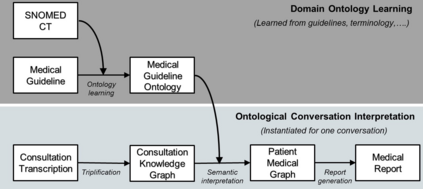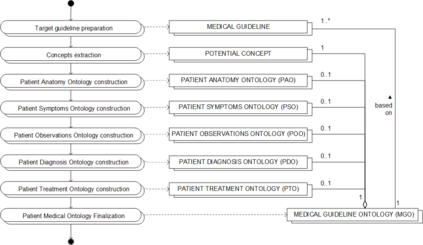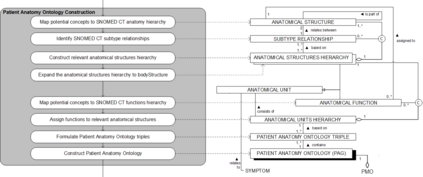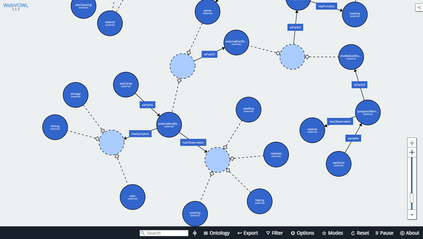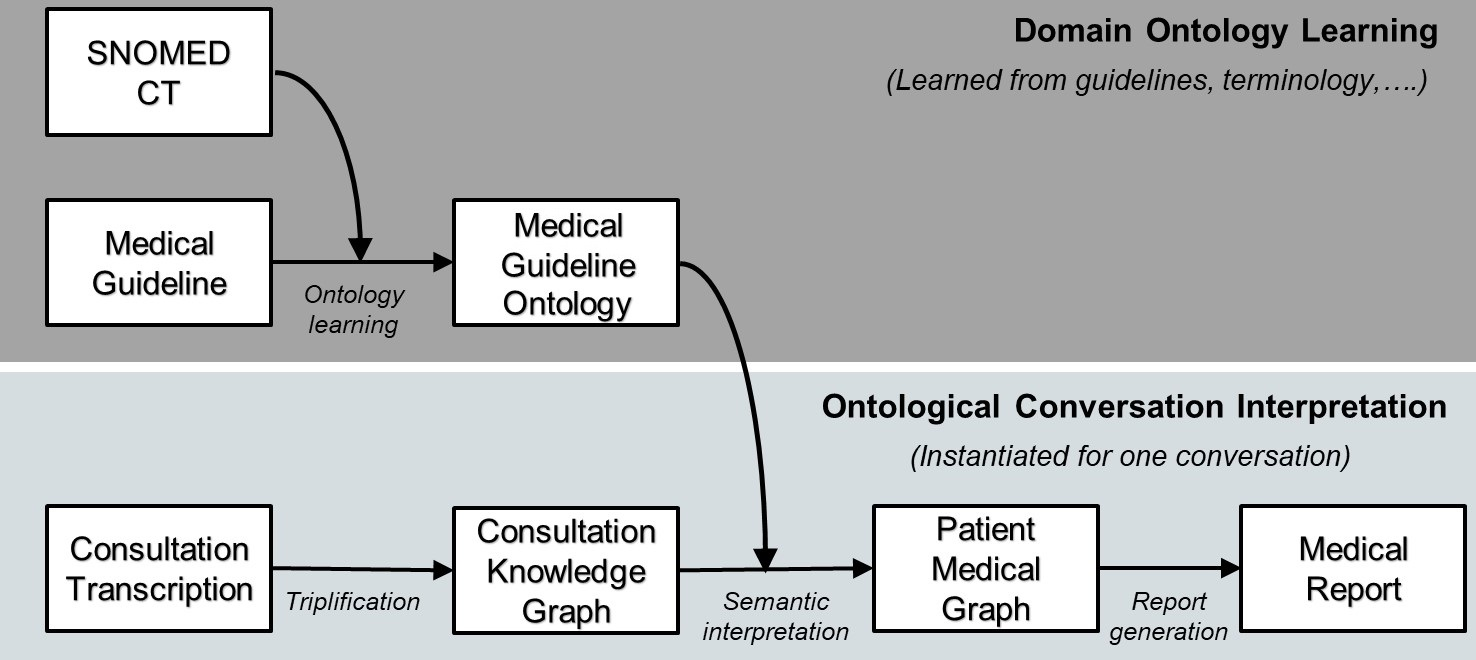The automated capturing and summarization of medical consultations has the potential to reduce the administrative burden in healthcare. Consultations are structured conversations that broadly follow a guideline with a systematic examination of predefined observations and symptoms to diagnose and treat well-defined medical conditions. A key component in automated conversation summarization is the matching of the knowledge graph of the consultation transcript with a medical domain ontology for the interpretation of the consultation conversation. Existing general medical ontologies such as SNOMED CT provide a taxonomic view on the terminology, but they do not capture the essence of the guidelines that define consultations. As part of our research on medical conversation summarization, this paper puts forward a semi-automated method for generating an ontological representation of a medical guideline. The method, which takes as input the well-known SNOMED CT nomenclature and a medical guideline, maps the guidelines to a so-called Medical Guideline Ontology (MGO), a machine-processable version of the guideline that can be used for interpreting the conversation during a consultation. We illustrate our approach by discussing the creation of an MGO of the medical condition of ear canal inflammation (Otitis Externa) given the corresponding guideline from a Dutch medical authority.
翻译:医疗咨询的自动捕获和汇总具有减少医疗咨询行政负担的潜力; 磋商是结构性对话,广泛遵循一项指导方针,对预先确定的观察和症状进行系统检查,以诊断和治疗明确界定的医疗条件; 自动对话和汇总的一个关键组成部分是,将咨询记录的知识图与医疗领域肿瘤学相匹配,以解释咨询对话; 现有一般医学学学学学,如SNOMED CT, 提供了术语分类学观点,但并不包含界定咨询的指导方针的本质; 作为我们医学谈话总结研究的一部分,本文提出一种半自动方法,用于生成医学指南的肿瘤代表; 该方法将众所周知的SNOMED CT 术语和医学指南作为投入,将指南绘制为所谓的医疗准则Ontology(MGO),该指南的机处理版本可用于在磋商期间解释谈话。 我们通过讨论建立MGO的诊断性诊断性诊断性诊断性诊断性诊断性诊断性诊断性诊断性诊断性病理学(Otitis),以此说明我们的方法。

